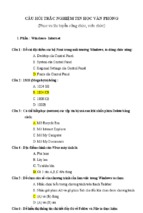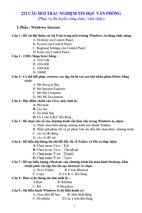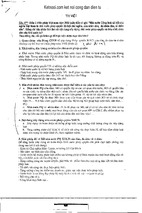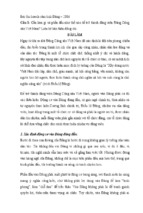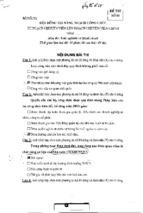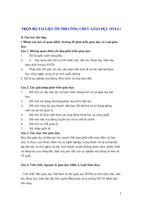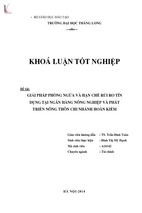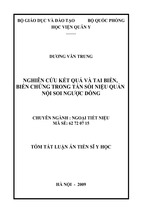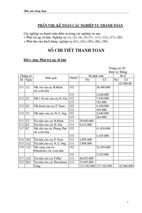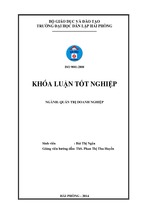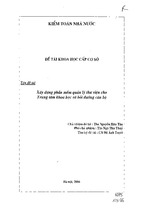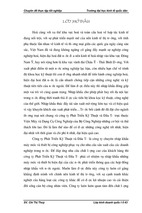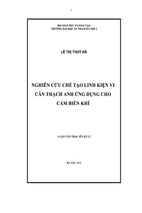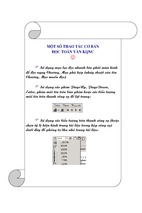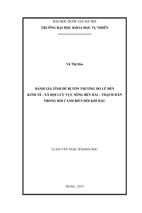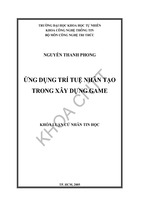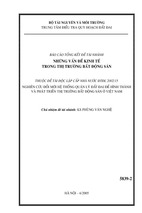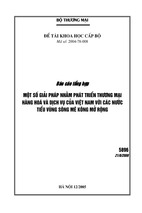MARINE AND OFFSHORE
JAPAN
Address:
HALTON MARINE (Sales)
(Sales)
HALTON OY (Factory)
Address:
Wimböck Japan Inc.
Pulttikatu 2
Ueno Bldg. 2F 20-16 Shinsen-cho
FIN-15700 Lahti
Shibuya-ku
FINLAND
Tokyo 150-0045
Telephone:
+358 (0)20792 200
Telephone:
+81 3 5459 7223
Fax:
+358 (0)20792 2060
Fax:
+81 3 54597224
Email:
[email protected]
Email:
[email protected]
Internet:
www.haltonmarine.com
MALAYSIA
(Sales, Factory)
(Sales)
Address:
Halton Manufacturing Sdn. Bhd.
Address:
HALTON N.V.
22, Jalan Hishamuddin 1
Interleuvenlaan 62
Selat Klang Utura
BE-3001 Leuven
P.O. Box 276
Telephone:
+32 16 40 06 10
MY-42000 Port Klang
Fax:
+32 16 40 22 64
Telephone:
+603 31 76 39 60
Email:
[email protected]
Fax:
+603 31 76 39 64
Email:
[email protected]
BELGIUM
Halton - Kitchen Design Guide
CANADA
(Factory and Sales)
Address:
Halton Indoor Climate Systems Ltd.
NORWAY
1021 Brevik Place
(Sales)
Mississauga, ON L4W 3R7
Address:
Halton AS
Telephone:
(905) 6240301
Ryenstubben 7
Fax:
(905) 6245547
N-0679 Oslo
Telephone:
+47 23 26 63 00
Fax:
+47 23 26 63 01
Email:
[email protected]
DENMARK
(Sales)
Address:
HALTON A/S
Nydamsvej 41
POLAND
DK-8362 Hørning
(Sales)
Telephone:
+45 86 92 28 55
Address:
Halton Sp. z o.o
Fax:
+45 86 92 28 37
ul. Brazylijska 14 A/14
Email:
[email protected]
PL-03-946 Warsaw
FINLAND
Telephone:
+48 22 67 28 581
Fax:
+48 22 67 28 591
Email:
[email protected]
(Sales)
Address:
HALTON OY
Niittyvillankuja 4
SWEDEN
FIN-01510 Vantaa
(Sales)
Telephone:
+358 (0)20792 200
Address:
Halton AB
Fax:
+358 (0)20792 2050
Box 68, Kanalvägen 15
Email:
[email protected]
SE-183 21 Täby
Telephone:
+46 8 446 39 00
Fax:
+46 8 732 73 26
Email:
[email protected]
FRANCE
(Sales)
Address:
HALTON S.A.
94-96 rue Victor Hugo
THE NETHERLANDS
FR-94851 IVRY/SEINE Cédex
(Sales)
Telephone:
+33 1 45 15 80 00
Address:
Halton B.V.
Fax:
+33 1 45 15 80 25
Utrechthaven 9a
Email:
[email protected]
NL-3433 PN Nieuwegein
Telephone:
+31 30 6007 060
(Factory)
Fax:
+31 30 6007 061
Email:
[email protected]
Address:
HALTON S.A.
Technoparc Futura
BP 102
FR-62402 BETHUNE Cédex
UNITED KINGDOM
Telephone:
+33 3 21 64 55 00
(Factory and Sales)
Fax:
+33 3 21 64 55 10
Address:
Halton Vent Master Ltd.
11 Laker Road
Airport Industrial Estate, Rochester
(Factory)
Address:
HALTON S.A.
Kent, ME1 3QX
Zone Industrielle-Saint Eloi
Telephone:
+44 (0)1634 666 111
12, Rue de Saint Germain
Fax:
+44 (0)1634 666 333
FR-60800 CRÉPY-EN-VALOIS
Telephone:
+33 3 44 94 49 94
USA
Fax:
+33 3 44 59 18 62
(Sales, Factory)
Address:
Halton Company
101 Industrial Drive
GERMANY
(Factory and Sales)
Scottsville, KY 42164
Address:
Wimböck GmbH
Telephone:
+1 270 237 5600
Tiroler str. 60
Fax:
+1 270 237 5700
83242 Reit im Winkl
Email:
[email protected]
Telephone:
+49 86408080
Fax:
+49 864080899
EXPORT
Email:
[email protected]
(Sales)
Address:
HALTON OY
Haltonintie 1-3
47400 Kausala
Telephone:
+358 (0)20792 2329
Fax:
+358 (0)20792 2085
Email:
[email protected]
More contact information is available at our website www.halton.com
Care for Indoor Air
Care for Indoor Air
ACKNOWLEDGEMENTS
Thank you to the many people and organisations who gave advice and information during the preparation
of this ‘Kitchen design guide’.
Third Edition: 2007 ©Halton Foodservice
All rights reserved
Halton Foodservice, Rabah Ziane
1
20/KDG/1500/0107/EN
Halton design guide for indoor air
climate in commercial kitchens
2
20/KDG/1500/0107/EN
3
20/KDG/1500/0107/EN
Halton design guide for indoor air
climate in commercial kitchens
4
20/KDG/1500/0107/EN
20/KDG/1500/0107/EN
Design Fundamentals
Commercial Kitchen Ventilation Systems
The commercial kitchen is a unique space where
and thermal comfort. The kitchen supply air, whether
many different HVAC applications take place within a
mechanical or transfer or a combination of both,
single environment. Exhaust, supply, transfer,
should be of an amount that creates a small negative
refrigeration, building pressurisation and air
pressure in the kitchen space. This will avoid odours
conditioning all must be considered in the design of
and contaminated air escaping into surrounding areas.
most commercial kitchens.
Therefore the correct exhaust air flow quantity is
It is obvious that the main activity in the commercial
fundamental to ensure good system operation,
kitchen is the cooking process. This activity generates
thermal comfort and improved IAQ.
heat and effluent that must be captured and
Similar considerations should be given to washing-up,
exhausted from the space in order to control odour
food preparation and serving areas.
Picture 1.
Design Fundamentals
5
Heat Gain and Emissions Inside
the Kitchen
The modes of heat gain in a space may include solar
radiation and heat transfer through the construction
together with heat generated by occupants, lights and
appliances and miscellaneous heat gains as air
infiltration should also be considered.
Cooking can be described as a process that adds heat
to food. As heat is applied to the food, effluent (1) is
released into the surrounding environment. This
effluent release includes water vapour, organic
material released from the food itself, and heat that
Sensible heat (or dry heat) is directly added to the
conditioned space by conduction, convection and
radiation. Latent heat gain occurs when moisture is
added to the space (e.g., from vapour emitted by the
cooking process, equipment and occupants). Space
heat gain by radiation is not immediate. Radiant
energy must first be absorbed by the surfaces that
enclose the space (walls, floor, and ceiling) and by the
objects in the space (furniture, people, etc.). As soon
as these surfaces and objects become warmer than
the space air, some of the heat is transferred to the air
in the space by convection (see picture 2).
To calculate a space cooling load, detailed building
design information and weather data at selected
design conditions are required. Generally, the following
information is required:
•
•
•
•
•
•
was not absorbed by the food being cooked. Often,
when pre-cooked food is reheated, a reduced amount
of effluent is released, but water vapour is still emitted
into the to the surrounding space.
The hot cooking surface (or fluid, such as oil) and
products create thermal air currents (called a thermal
plume) that are received or captured by the hood and
then exhausted. If this thermal plume is not totally
captured and contained by the hood, they become a
heat load to the space.
There are numerous secondary sources of heat in the
kitchen (such as lighting, people, and hot meals) that
contribute to the cooling load as presented in table 1.
building characteristics
configuration (e.g, building location)
outdoor design conditions
indoor design conditions
operating schedules
date and time of day
Load
W
Lighting
21-54/m2
People
130/person
Hot meal
15/meal
Cooking eq.
varies
Refrigeration
varies
Table 1. Cooling load from various sources
However, in commercial kitchens, cooking processes
contribute the majority of heat gains in the space.
2
1
Thermal plumes
2
Radiant heat
Picture 2. Heat gain and emission inside the kitchen
Design Fundamentals
6
1
20/KDG/1500/0107/EN
Initial Design Considerations
Met is a unit used to express the metabolic rate per
unit Dubois area, defined as the metabolic rate of a
Thermal Comfort
One reason for the low popularity of kitchen work is
the unsatisfactory thermal conditions.
Thermal comfort is a state where a person is satisfied
with the thermal conditions.
sedentary person, 1 met = 50 kcal/(hr.m2) = 58.2 W/m2.
Assymmetric Thermal Radiation
In the kitchen, the asymmetry of radiation between
the cooking appliances and the surrounding walls is
The International Organisation for Standardisation
(ISO) specifies such a concept as the predicted
percentage of dissatisfied occupants (PPD) and the
predicted mean vote (PMV) of occupants.
PMV represents a scale from -3 to 3, -from cold to hot -,
with 0 being neutral. PPD tells what percentage of
occupants are likely to be dissatisfied with the thermal
environment. These two concepts take into account four
factors affecting thermal comfort:
is generally much higher than 20° C.
80
Warm ceiling
Cool wall
40
Percent Dissatisfied
•
•
•
•
considerable as the temperature difference of radiation
air temperature
radiation
air movement
humidity
20
Cool ceiling
10
Warm wall
5
2
1
0
5
10
15
20
25
30
35
°C
Radiant Temperature Asymmetry
Figure 2. Assymmetric thermal radiation
Ventilation Effectiveness and Air Distribution
System
The Effect of Air Supply
Ventilation effectiveness can be described as the
ability of ventilation system to achieve design
conditions in the space (air temperature, humidity,
concentration of impurities and air velocity) at
minimum energy consumption. Air distribution
methods used in the kitchen should provide adequate
ventilation in the occupied zone, without disturbing the
thermal plume.
Figure 1. PPD as a function of PMV
The percentage of dissatisfied people remains under
10% in neutral conditions if the vertical temperature
difference between the head and the feet is less than
3°C and there are no other non-symmetrical
temperature factors in the space. A temperature
difference of 6-8°C increases the dissatisfied
percentage to 40-70%.
There are also important personal parameters
influencing the thermal comfort (typical values in
kitchen environment in parenthesis):
In the commercial kitchen environment the supply
airflow rate required to ventilate the space is a major
factor contributing to the system energy consumption.
Traditionally high velocity mixing or low velocity mixing
systems have been used. Now there is a third alternative
that clearly demonstrates improved thermal comfort over
mixing systems, this is displacement ventilation.
• clothing (0.5 - 0.8 clo)
• activity (1.6 - 2.0 met)
The supply air (make-up air) can be delivered to the
kitchen in two ways:
• high velocity or mixiing ventilation
• low velocity or displacement.
Clo expresses the unit of the thermal insulation of
clothing (1 clo = 0.155 m2 K/W ).
Design Fundamentals
7
20/KDG/1500/0107/EN
Thermal Comfort, Productivity and Health
20/KDG/1500/0107/EN
Low Velocity or Displacement Ventilation
Here, the cooler-than-surrounding supply air is
distributed with a low velocity to the occupied zone. In
this way, fresh air is supplied to where it is needed.
Because of its low velocity, this supply air does not
disturb the hood function.
Picture 4. High velocity or mixing ventilation
In the case of mixing ventilation, with an
intensity of turbulence from 30 to 50 %, one
finds 20 % of people dissatisfied in the following
conditions:
air temperature. (°C)
air velocity (m/s)
20
0.15
26
0.25
Table 2. Air temperature/air velocity
Refer to section Effect of Air Distribution System page
Picture 3. Low velocity or displacement ventilation
39 for a detailed comparison between mixing and
displacement systems in a typical kitchen
environment.
With a displacement system the intensity of
turbulence of about 10 %, one accepts velocities
between 0.25 and 0.40 m/s, with the air
between 20 and 26°C respectively with 20% of
people dissatisfied.
High velocity or Mixing Ventilation
Everything that is released from the cooking process
is mixed with the supply air. Obviously impurities and
heat are mixed with surrounding air. Also the high
velocity supply air disturbs the hood function.
Picture 5. Recommended design criteria
Design Fundamentals
8
Labour shortages are the top challenge that
27°C in the kitchen the productivity of the restaurant
commercial restaurants face today. The average age of
employees is reduced to 80 % (see picture 6). That
a restaurant worker is between 16 and 24 years. In a
translates to losses of about $40,000 yearly on
recent survey conducted by the National Restaurant
salaries and wages for an owner of a 100-seat
Association in USA, over 52% of respondents said
restaurant.
that finding qualified motivated labour was their main
concern.
Room air temperature affects a person’s capacity to
work. Comfortable thermal conditions decrease the
number of accidents occurring in the work place.
When the indoor temperature is too high (over 28 °C
in commercial kitchens) the productivity and general
comfort diminish rapidly.
The average restaurant spends about $2,000 yearly on
salaries in the USA, wages and benefits per seat. If
the air temperature in the restaurant is maintained at
Picture 6. Productivity vs. Room Air Temperature
Health
There are several studies dealing with cooking and
The risk was further increased among women stir-
health issues. The survey confirmed that cooking
frying meat daily whose kitchens were filled with oily
fumes contain hazardous components in both Western
fumes during cooking. Also, the statistical link
and Asian types of kitchens. In one study, the fumes
between chronic coughs, phlegm and breathlessness
generated by frying pork and beef were found to be
on exertion and cooking were found.
mutagenic. In Asian types of kitchens, a high
concentration of carcinogens in cooking oil fumes has
In addition to that, Cinni Little states, that three
been discovered. All this indicates that kitchen
quarters of the population of mainland China alone use
workers may be exposed to a relatively high
diesel as fuel type instead of town gas or LPG,
concentration of airborne impurities and that cooks are
causing extensive bronchial and respiratory problems
potentially exposed to relatively high levels of
among kitchen workers, which is possibly exacerbated
mutagens and carcinogens.
by an air stream introduced into the burner mix.
Chinese women are recognised to have a high
incidence of lung cancer despite a low smoking rate
e.g. only 3% of women smoke in Singapore. The
studies carried out show that inhalation of carcinogens
generated during frying of meat may increase the risk
of lung cancer.
Design Fundamentals
9
20/KDG/1500/0107/EN
Productivity
The range of thermal comfort neutrality acceptable
highest acceptable temperature (Weihe 1987, quoted
without any impact on health has been proposed as
in WHO 1990). Symptoms of discomfort and health
running between 17°C as the lowest and 31°C as the
risks outside this range are indicated in table 3.
<<
< 17 °C
> 31 °C
>>
Table 3. Health effects of thermal microclimates lying outside the neutral comfort zone
Ventilation Rate
The airflow and air distribution methods used in the
ventilation air is supplied equally throughout the
kitchen should provide adequate ventilation in the
occupied zone. Some common faults are to locate the
occupied zone, without disturbing the thermal plume
supply and exhaust units too close to each other,
as it rises into the hood system. The German VDI-2052
causing ‘short-circuiting’ of the air directly from the
standard states that a:
supply opening to the exhaust openings. Also, placing
the high velocity supply diffusers too close to the
Ventilation rate over 40 vol./h result on the basis of the
hood system reduces the ability of the hood system
heat load, may lead to draughts.
to provide sufficient capture and containment (C&C) of
the thermal plume.
The location of supply and exhaust units are also
Recent studies show that the type of air distribution
important for providing good ventilation. Ventilating
system utilised affects the amount of exhaust needed
systems should be designed and installed so that the
to capture and contain the effluent generated in the
cooking process.
Design Fundamentals
10
20/KDG/1500/0107/EN
Reduction of Health Impact
20/KDG/1500/0107/EN
Integrated Approach
Energy savings can be realised with various exhaust
hood applications and their associated make-up air
distribution methods. However with analysis the
potential for increased energy savings can be realised
when both extract and supply for the kitchen are
adopted as an integrated system.
The combination of high efficiency hoods (such as
Capture-Jet hoods) and displacement ventilation
reduces the required cooling capacity, while
maintaining temperatures in the occupied space. The
natural buoyancy characteristics of the displacement
air helps the C&C of the contaminated convective
plume by ‘lifting’ it into the hood.
Third-party research has demonstrated that this
integrated approach for the kitchen has the potential
to provide the most efficient and lowest energy
consumption of any kitchen system available today.
Picture 7. Displacement ventilation
Design Fundamentals
11
20/KDG/1500/0107/EN
Kitchen Hoods
The purpose of kitchen hoods is to remove the heat,
smoke, effluent, and other contaminants. The thermal
plume from appliances absorbs the contaminants that
are released during the cooking process. Room air
replaces the void created by the plume. If convective
heat is not removed directly above the cooking
equipment, impurities will spread throughout the
kitchen, leaving discoloured ceiling tiles and greasy
countertops and floors. Therefore, contaminants from
stationary local sources within the space should be
controlled by collection and removal as close to the
source as is practical.
Picture 8. Cooking process
convective and latent heat are ‘spilling’ into the
kitchen thereby increasing both humidity and
temperature.
Capture efficiency is the ability of the kitchen hood to
provide sufficient capture and containment at a
minimum exhaust flow rate. The remainder of this
chapter discusses the evolution and development of
kitchen ventilation testing and their impact on system
Appliances contribute most of the heat in commercial
kitchens. When appliances are installed under an
effective hood, only the radiant heat contributes to the
HVAC load in the space. Conversely, if the hood is not
providing sufficient capture and containment,
design.
Picture 9. Capture efficiency hoods
Kitchen Hoods
12
Tracer Gas Studies
Halton pioneered the research on kitchen exhaust
the heated cooking surface and compared to the
system efficiency in the late 1980’s, commissioning a
concentration measured in the exhaust duct. The
study by the University of Helsinki. At the time there
difference in concentration was the efficiency at a
were no efficiency test standards in place. The goal
given air flow. This provided valuable information about
was to establish a test protocol that was repeatable
the potential for a variety of capture and containment
and usable over a wide range of air flows and hood
strategies. The Capture JetTM system was tested using
designs.
the Tracer Gas technique and the results showed a
significant improvement in capture and containment of
Nitrous Oxide (tracer gas), a neutrally buoyant gas,
the convective plume at lower exhaust air flows
was used. A known quantity of gas was released from
compared to conventional exhaust only hoods.
Picture 10. Tracer gas studies
Kitchen Hoods
13
20/KDG/1500/0107/EN
Evolution of Kitchen Ventilation System
system and are used to measure the heat gain to the
kitchen space. This enables researchers to determine
the temperature of room air being extracted into the
hood.
In theory, when the hood is providing sufficient
capture and containment, all of the convective plume
from the appliance is exhausted by the hood while the
remaining radiant load from the appliance is heating
up the hood, kitchen walls, floors, ceiling, etc. that are
eventually seen as heat in the kitchen.
• to the food being cooked
• out of the exhaust duct
• into the kitchen as heat load
Schlieren Thermal
Imaging
Schlieren thermal
imaging has been around
In late 1993, this was introduced as a draft standard to
be adopted by ASTM and was called the Energy
Balance Protocol. The original protocol was developed
to only examine the energy interactions in the kitchen
with the goal of determining how much heat was
released into the kitchen from cooking under a variety
of conditions. This standard was adopted by ASTM as
F1704.
since the mid 1800’s but
was really used as a
scientific tool starting
from the late 20th century.
During the 1950’s
Picture 11. Capture JetTM ON.
Schlieren thermal imaging was used by AGA
Laboratories to evaluate gas combustion with several
different burner technologies. NASA has also made
significant use of Schlieren thermal imaging as a means
of evaluating shockwaves for aircraft, the space shuttle,
and jet flows. In the 1990’s Penn State University
began using Schlieren visualisation techniques to
evaluate heat flow from computers, lights, and people
in typical home or office environments. In 1998 the
kitchen ventilation lab in Chicago purchased the first
Schlieren system to be used in the kitchen ventilation
industry. In 1999, the Halton Company became the first
ventilation manufacturer globally to utilise a Schlieren
thermal Imaging system for use in their research and
development efforts.
By using the thermal imaging system we can visualise
Figure 3. Capture & containment
all the convective heat coming off an appliance and
Around 1995, the standard adopted new methods of
determine whether the hood system has sufficient
determining the capture and containment using a
capture and containment. In addition to verifying
variety of visualisation techniques including visual
capture and containment levels, the impact of various
observation, neutrally buoyant bubbles, smoke, lasers,
supply air and air distribution measures can be
and Schlieren thermal imaging (discussed in more
incorporated to determine the effectiveness of each.
detail later in this section).
By using this technology a more complete
understanding of the interaction between different
The test set up includes a hood system operating over
components in the kitchen (e.g., appliances, hoods,
a given appliance. Several thermocouple trees are
make-up air, supply diffusers, etc.) is being gained.
placed from 1.8 m to 2.5 m. in the front of the hood
Kitchen Hoods
14
20/KDG/1500/0107/EN
ASTM F1704
In 1990, AGA Laboratories was funded by the Gas
Research Institute to construct a state-of-the-art
kitchen ventilation laboratory and research the
interaction between cooking appliances, kitchen
ventilation hoods, and the kitchen environment.
In early 1993, the original Energy Balance Protocol
was developed to explain the interaction between the
heat loads in the kitchen. Mathematically, the energy
consumed by the cooking appliance can only go three
places:
20/KDG/1500/0107/EN
Computer Modelling
Computational Fluid
Dynamics (CFD) has been
used in the aerospace and
automobile industries for a
number of years. Recently,
CFD use has become
more widespread,
specifically in the HVAC
industry.
30
Figure 4. CFD
50
70
100
Airflow (%)
CFD works by creating a three-dimensional computer
model of a space. Boundary conditions, in the case of
Figure 5. Capture efficiency
kitchen ventilation modelling, may include; hood
Consequently, the performances of induction hoods
exhaust rates, input energy of the appliance, supply air
are not due to the delivery of unheated air, but to the
type and volume and temperature of supply air.
improvement in capture.
Complex formulas are solved to produce the final
results. After the solutions converge, variables such as
temperature, velocity, and flow directions can be
visualised. CFD has become an invaluable tool for the
researcher by providing an accurate prediction of
results prior to full scale mock-ups or testing for
validation purposes.
Conclusion of the Test Conducted by EDF:
30
70
The study on induction hoods shows that their capture
80
90
100
Airflow (%)
performances vary in relation to the air induction rate.
If this rate is too high (50 to 70%), the turbulence
Figure 6. Capture efficiency
created by the hood prevents the efficient capture of
DEFINITION:
contaminants. If the Capture Jet air rate is about 10%
Induction Hood is a concept, which allows for the
or lower, the capture efficiency can be increased by
introduction of large volumes of untreated make-up air
20-50%, which in turn leads to an equivalent reduction
directly into the exhaust canopy. The ratio of make-up
in air flow rates.
air to exhaust air was as high as 80%.
Kitchen Hoods
15
20/KDG/1500/0107/EN
Grease Extraction
The convection plume from the cooking operation
underneath the hood contains grease that has to be
extracted as efficiently as possible. The amount of
grease produced by cooking is a function of many
variables including: the type of appliance used for
cooking, the temperature that food is being cooked at,
and the type of food product being cooked.
The purpose of a mechanical grease filter is twofold:
first to provide fire protection by preventing flames
from entering the exhaust hood and ductwork, and
Figure 7. Total grease emissions by appliance category
secondly to provide a means of removing large grease
particles from the exhaust stream. The more grease
that can be extracted, the longer the exhaust duct and
Upon observing figure 7, it appears at first as if the
fan stay clean, resulting in better fire safety.
underfired broiler has the highest grease emissions.
From a practical standpoint, grease filters should be
However when examining the figure closer you see
easily cleanable and non-cloggable. If the filter
that if a gas or electric broiler is used to cook chicken
becomes clogged in use, the pressure drop across the
breasts, the grease emissions are slightly lower than if
filter will increase and the exhaust airflow will be
you cook hamburgers on a gas or electric griddle. This
lower than designed.
is the reason that we are discussing “cooking
operation” and not merely the type of appliance.
What Is Grease?
However, we can say that, for the appliances tested in
According to the University of Minnesota, grease is
this study, the largest grease emissions are from
comprised of a variety of compounds including solid
underfired broilers cooking burgers while the lowest
and/or liquid grease particles, grease and water
grease emissions were from the deep-fat fryers. The
vapours, and a variety of non-condensable gases
gas and electric ranges were used to cook a spaghetti
including nitrogen oxides, carbon dioxide, and carbon
meal consisting of pasta, sauce, and sausage. All of
monoxide. The composition of grease becomes more
the other appliances cooked a single food product. It
complex to quantify as grease vapours may cool down
is expected that the emissions from solid-fuel (e.g.,
in the exhaust stream and condense into grease
wood burning) appliances will probably be on the
particles. In addition to these compounds,
same order of magnitude as under-fired broilers, but in
hydrocarbons can also be generated during the
addition to the grease, large quantities of creosote and
cooking process and are defined by several different
other combustion by-products may be produced that
names including VOC (volatile organic compounds),
coat the grease duct. Chinese Woks may have grease
SVOC (semi-volatile organic compounds), ROC
emissions well above under-fired broiler levels due to
(reactive organic compounds), and many other
high surface temperature of the Woks combined with
categories.
the cooking medium utilised for cooking (e.g. peanut
oil, kanola oil, etc.) which will tend to produce extreme
Grease Emissions By Cooking Operation
grease vaporisation and heat levels table 4 presents
An ASHRAE research project conducted by the
the specific foods cooked for the appliances presented
University of Minnesota has determined the grease
in figure 8 and figure 9.
emissions from typical cooking processes. Figure 7
presents total grease emissions for several appliances.
Kitchen Hoods
16
Food Product
Gas Griddle
Electric Griddle
Beef hamburgers, 113 g, 120 mm diameter, 20% fat content
Gas Fryer
Electric Fryer
French fried potatoes, par-cooked, frozen shoestring potatoes, 60 mm thick with 2.2% fat content.
Gas Broiler
Electric Broiler
Beef hamburgers, 150 g, 120 mm diameter, 20% fat content
Gas Broiler
Electric Broiler
Boneless, skinless chicken breast, frozen, 1115 g, 125 mm thickness.
Gas Oven
Electric Oven
Sausage pizza with sausage, textured vegetable protein, mozzarella cheese, and cheese substitute. Each slice
was 100 x 150 mm, 142 g.
Gas Range
Electric range
Two pots of spaghetti noodles, 2.266 kg. dry weight, one pot boiling water, two posts of tomato based
spaghetti sauced, 3 litters each 1.360 kg of link style sausage cooked in a frying pan.
Table 4. Description of food cooked on each appliance
Figure 8. Particulate and vapour grease percentages by appliance
category
Figure 9. Particle size distribution by cooking process
The components of grease were discussed earlier and
The final piece of information that is important for
a breakdown of the grease emissions into the
grease extraction is the size distribution of the grease
particulate and vapor phases is shown in figure 8.
particles from the different cooking processes,
presented in figure 9.
Upon examining figure 8, it becomes apparent that
the griddles, fryers, and broilers all have a significant
It can be observed from figure 9 that, on a mass
amount of grease emissions that are composed of
basis, cooking processes tend to produce particles
particulate matter while the ovens and range tops are
that are 10 microns and larger. However, the broilers
emitting mainly grease vapour. If you combine the
produce significant amounts of grease particles that
data in figure 7 with the data in figure 8 it becomes
are 2.5 microns and smaller (typically referred to as
evident that the broilers have the largest amount of
PM 2.5) regardless of the food being cooked on the
particulate matter to remove from the exhaust stream.
broiler.
Kitchen Hoods
17
20/KDG/1500/0107/EN
Appliance
Figure 11 presents the extraction efficiency curve for
One non-cloggable design of a baffle type grease
Halton’s KSA filter for four different pressure drops
extractor is a “cyclone.’ The extractor is constructed of
across the filter.
multiple cyclones that remove grease from the air
Filter Removal Efficiency
stream with the aid of centrifugal force.
100
90
80
70
60
50
40
30
20
10
0
Figure 10 presents Halton’s KSA grease filter design.
You can see the cyclonic action inside the KSA filter.
2
1
2
3
4
• 210 l/s – 240 Pa
• 150 l/s – 120 Pa
5
6
7
8
particle size, microns
9
10
11
• 110 l/s – 60 Pa
• 80 l/s – 30 Pa
Figure 11. Grease extraction efficiency curves for KSA filter 500x330.
3
Comparison Test Filter Efficiency
1
When comparing to the other type of filters on the
market like ‘Baffle filter’, the results below show that
Figure 10. Halton KSA filter
Halton has the most efficient filter on the market.
1. air enters through a slot in the filter face
2. air spins through the filter, impinging
Filter Removal Efficiency
grease on the filter walls
100
90
80
70
60
50
40
30
20
10
0
3. the cleaner air exits the top and
bottom of the filter.
Filter Efficiency
VDI has set up a test procedure (September 1999) in
order to compare the results of grease filters from
different manufacturer.
1
2
3
4
5
6
7
8
particle size, microns
• Halton KSA 330, 150 l/s
• Halton KSA 500, 150 l/s
KSA –filters were supplied by Halton to an
9
10
11
• Other filter type, 110 l/s
• Baffle filter type, 150 l/s
Figure 12. Comparison test filter efficiency.
independent laboratory. The fractional efficiency
measurements were made at the flow rates of 80 l/s,
Research has shown that as far as efficiency is
110 l/s, 150 l/s and 210 l/s.
concerned, slot filters (baffle) are the lowest, followed
by baffle style filters (other type).
Mechanical grease filters quickly lose grease removal
Note how the KSA efficiency remains high even when
effectiveness as the particulate size drops below 6
the filters are not cleaned and loading occurs.
microns depending on the pressure drop across the
filters.
Increasing the flow rate from 80 l/s to 210 l/s causes
an increase in the efficiency.
Kitchen Hoods
18
20/KDG/1500/0107/EN
Cyclonic Grease Extraction
20/KDG/1500/0107/EN
Ultraviolet Light Technology
Ultraviolet Light – What Is It ?
Light is the most common form of the
electromagnetic radiation (EMR) that the average
person is aware of. Light is only a very small band
within the electromagnetic spectrum. Cosmic rays, Xrays, radio waves, television signals, and microwave
are other examples of EMR.
EMR is characterised by its wavelength and frequency.
Wavelength is defined as the length from the peak of
one wave to the peak of the next, or one oscillation
(measured in metres). Frequency is the number of
oscillations in one second (measured in Hertz).
Sunlight is the most common source of ultraviolet
Picture 12. UVL with Capture RayTM
radiation (UVR) but there are also many other sources.
UVR emitting artificial light sources can be produced
to generate any of the UVR wavelengths by using the
How Does the Technology Work?
appropriate materials and energies.
Ultraviolet light reacts to small particulate and volatile
organic compounds (VOC) generated in the cooking
Ultraviolet radiation is divided into three categories –
process in two ways, by exposing the effluent to light
UVA, UVB, and UVC. These categories are determined
and by the generation of ozone (UVC).
by their respective wavelengths.
As is commonly known, the effluent generated by the
Ultraviolet A radiation is the closest to the
cooking process is a fatty substance. From a chemical
wavelengths of visible light .
standpoint, a fatty substance contains double bonds,
Ultraviolet B radiation is a shorter, more energetic
which are more reactive than single bonds. By using
wave.
light and ozone in a certain manner, we are able to
Ultraviolet C radiation is the shortest of the three
attack these double bonds and consequently break
ultraviolet bands and is used for sterilisation and
them. This results in a large molecule being broken
germicidal applications.
down into two smaller ones. Given enough reactive
sites, this process can continue until the large
UV technology has been known since the 1800’s. In
molecule is broken down
the past it has been utilised in hospital, wastewater
into carbon dioxide and
treatment plants, and various industry applications.
water, which are
HALTON has now developed new applications to
odourless and harmless.
harness the power of Ultraviolet Technology in
Unlike the grease that
commercial kitchens.
results in these small
molecules, CO2 and H2O
will not adhere to the
duct and will be carried
out by the exhaust air flow.
Kitchen Hoods
19

